Part of a series of articles titled Park Paleontology News - Vol. 12, No. 2, Fall 2020.
Article
Counting Fossils in Colonial Virginia During COVID-19

Mackenzie Chriscoe and Dr. Rowan Lockwood
William & Mary
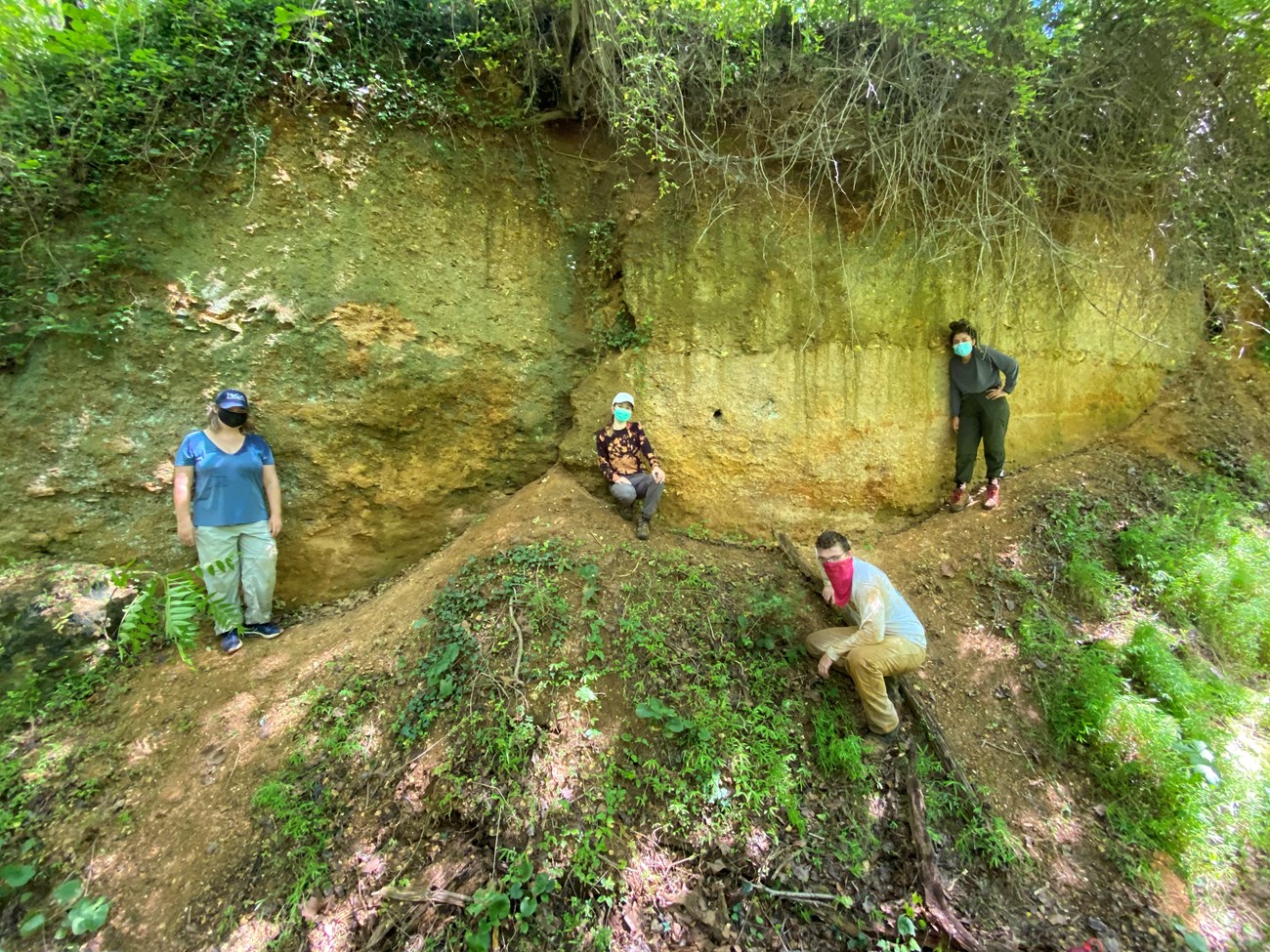
NPS photo by Lyra Swaddle.
As a kid, I never imagined I’d become a geologist. In fact, that was probably the last thing I would tell people when they inevitably asked about my far-off career goals. Like every other kid, I wanted to be a paleontologist at some point, only for those dreams to be immediately crushed by some adult saying there was, essentially, not a chance. Now, as a rising senior at William & Mary, a public university in Williamsburg, Virginia, I have the pleasure of studying both of those fields, and I am honored to be conducting research with the National Park Service. My advisor, Dr. Rowan Lockwood, developed a partnership with a team of NPS employees (principally Vincent Santucci, Justin Tweet, and Dorothy Geyer) to create the first comprehensive inventory for Colonial National Historical Park (COLO), and I joined this project as an intern in January 2020. This project will culminate in not only the aforementioned inventory, but also a senior thesis that I will present to William & Mary’s geology department in the spring.

NPS photo by Rowan Lockwood.
My work in January was simple: begin a literature review. Along with the NPS team and Dr. Lockwood, I tracked down any and all information about local fossils and where they have been discovered within COLO. I began creating a taxa list based on past studies of the area. By June, I started to feel like a true geologist, mud-stained shirts and all. I led several field excursions that invariably produced soaked boots, sweat stains, and enough sand trapped in my clothes to create a pocket beach when I returned home (see Figure 2). Dr. Lockwood and I, sometimes joined by other geology majors, traveled to various areas in the park to collect bulk samples packed with fossils and sediment that I later sieved and sorted in order to identify species as well as describe the sediment from these areas.
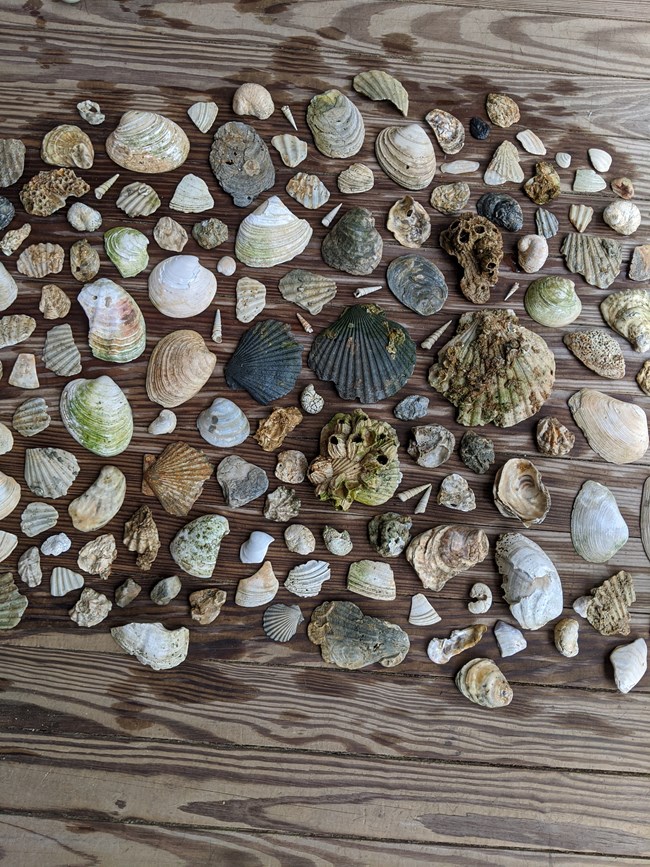
Photo courtesy of NPS Mackenzie Chriscoe.
COLO is a unique park because of the intersection of history and geology within its borders. The park was created to protect locations where key battles in both the American Revolutionary and Civil Wars occurred, as well as other historic sites such as the Jamestown Settlement, which was the first permanent English settlement in North America. Fossil collecting in and around COLO dates back to these settlers in the 17th century, at least. The oldest fossils in the park date back to the Miocene, meaning they can be upwards of five million years old. Interestingly, the geology in this area is complex, with no single cliff or outcrop that preserves the entire sequence for us to study (Tweet et al., 2014). There are several scarps created by changing sea level, as well as some buried faults that may have been caused by the Chesapeake Bay Impact Structure, a crater from an extra-terrestrial impact around 35 Ma. This crater underlies a portion of COLO and could also help explain the complexities of the stratigraphic layers (McFarland and Bruce, 2006).
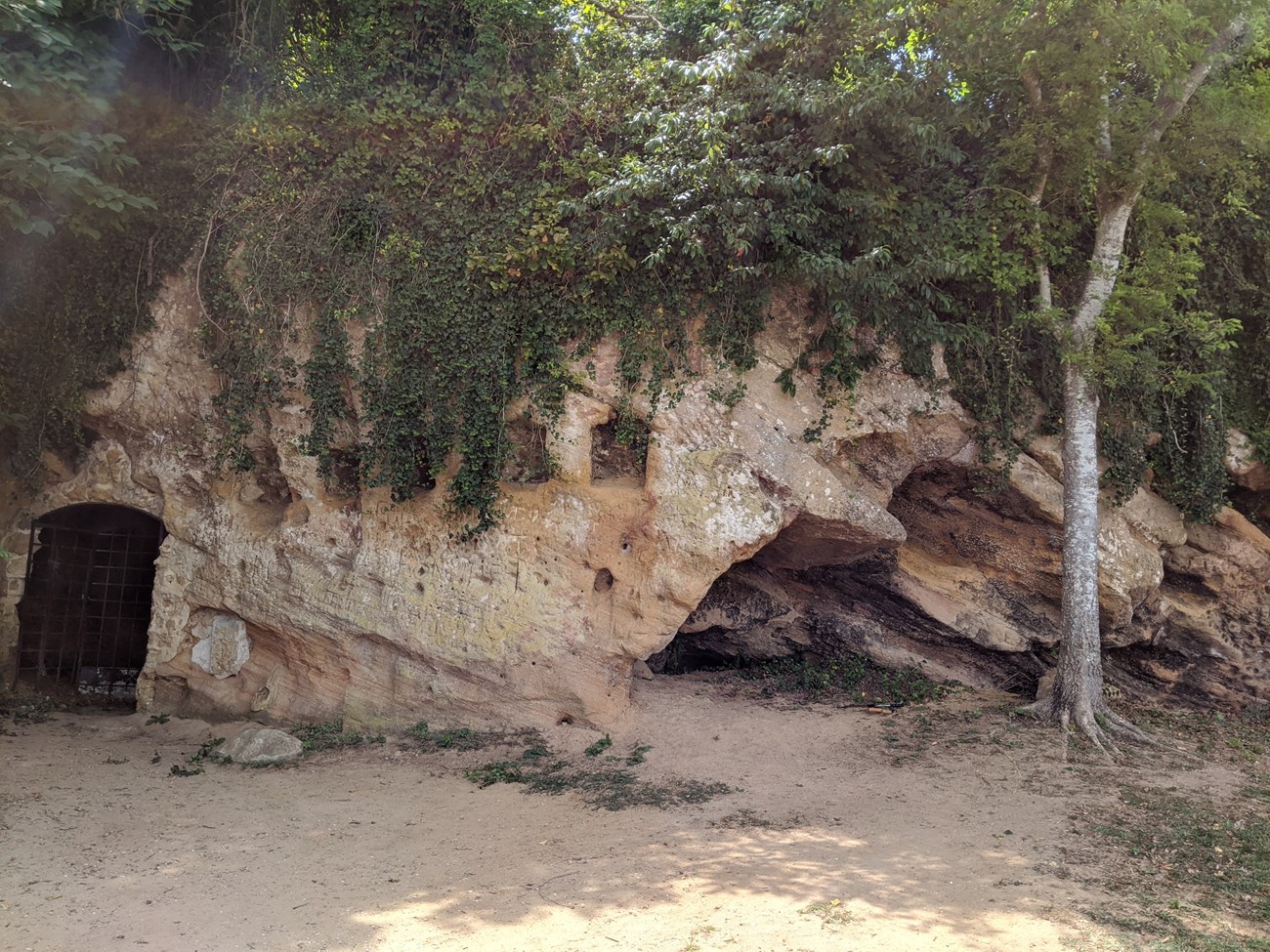
NPS photo by Mackenzie Chriscoe.
Perhaps the most interesting geologic feature of COLO is Cornwallis Cave, a small human-made cave carved out of a cliff of cemented shell hash (see Figure 3). It was supposedly a refuge for General Cornwallis during the Revolutionary War, although this fact is frequently debated due to historical inconsistencies in the location and size of the cave. Regardless of whether this is true, the cave was definitely used for food storage throughout the 18th and 19th centuries and played a role in the Civil War as well. As a historical site alone, Cornwallis Cave is worth protecting; however, it is also a unique geologic structure. Since it is made up of shells, the cliff containing the cave reacts to chemical weathering, which is quite unusual in a place with few carbonate deposits. The NPS wants to preserve this site as well as understand how to manage the natural processes, such as rain and groundwater erosion, that are acting on the cave. Although Cornwallis Cave is less helpful in the creation of COLO’s fossil inventory, it is possible to view some whole shells in the cliff face as well as a few preserved burrows. The burrows in particular are helpful for reconstructing the geologic past, and the preservation of this site could serve as a guide for similar areas (Santucci et al., 2001).
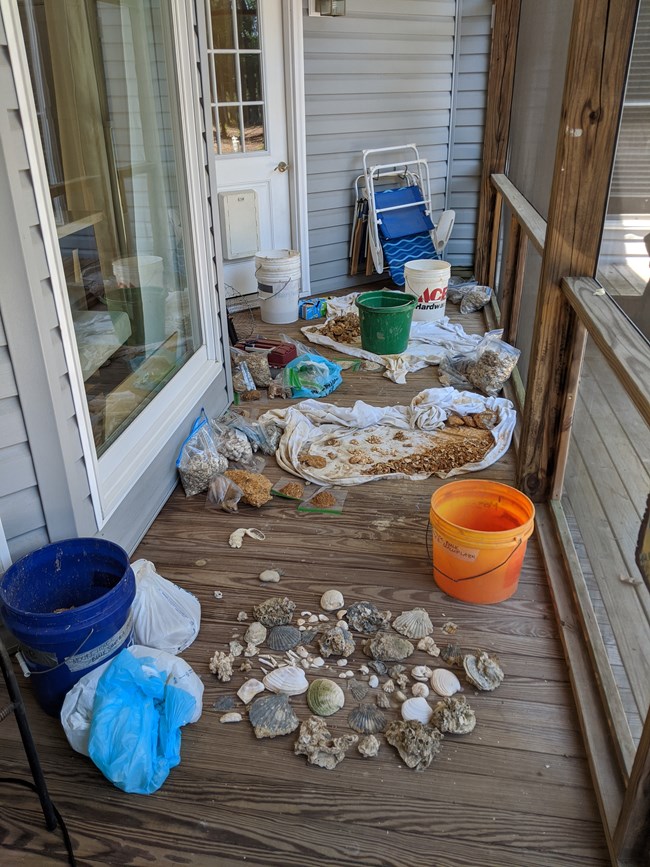
NPS photo by Mackenzie Chriscoe.
Normally, a project like this would involve a lot of field and collaborative work in the Paleontology Lab at William & Mary. However, with the emergence of COVID-19 and the restrictions that came along with it, my work followed me home. I do most of my work for this project at my house, where I have cobbled together a makeshift outdoor lab on a screened-in porch (see Figure 4). Unfortunately, I will have to un-cobble this lab and clean up all the leftover sediment, because I’ve been told that it detracts from the view and keeps getting tracked into the house. Working from home also means I have limited access to Dr. Lockwood, which makes the identification of my samples a longer and more difficult task. Instead of being able to carry a complicated specimen down the hall, I’ve created a Google folder, where I upload pictures with my tentative identification for her to confirm as needed.
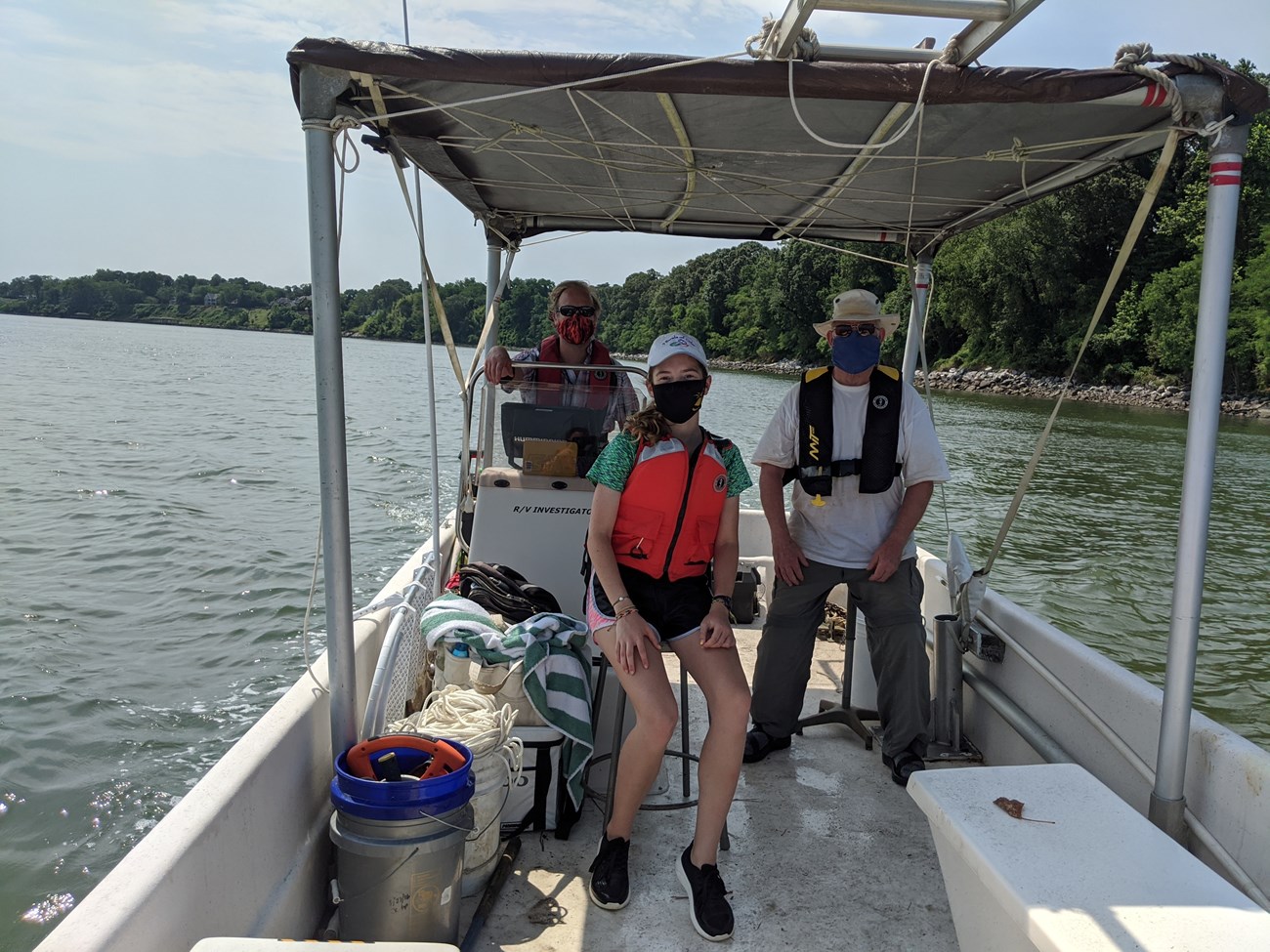
NPS photo by Rowan Lockwood.
Field work also requires careful planning. According to William & Mary’s CDC-compliant guidelines, everyone in the field must wear masks and maintain six feet of distance between them, which is a little difficult when collecting bulk samples that require at least two people to carry. With temperatures regularly above 90 degrees Fahrenheit and 100% humidity, wearing a mask and working in the sun can become overwhelming. Along with William & Mary’s guidelines, my paleontology lab group has come up with our own: plenty of water and ice cream. The social aspect of summer research on campus has been sorely missed this year, but because my project is local, my lab group has been able to join together and make up for some of that lost fun. I am extremely thankful to the NPS, the William & Mary geology department, and my lab group for making this project possible even in the midst of difficult times. Despite the necessary hardships, I am excited to continue my research with the NPS throughout this year, and I know my lab will be excited to eat more clam strips after a good day of field work.
Related Links
- Colonial National Historical Park, Virginia—[Geodiversity Atlas] [Park Home]
- William & Mary Geology Department
- NPS—Fossils and Paleontology
- NPS—Geology
Last updated: October 8, 2020
